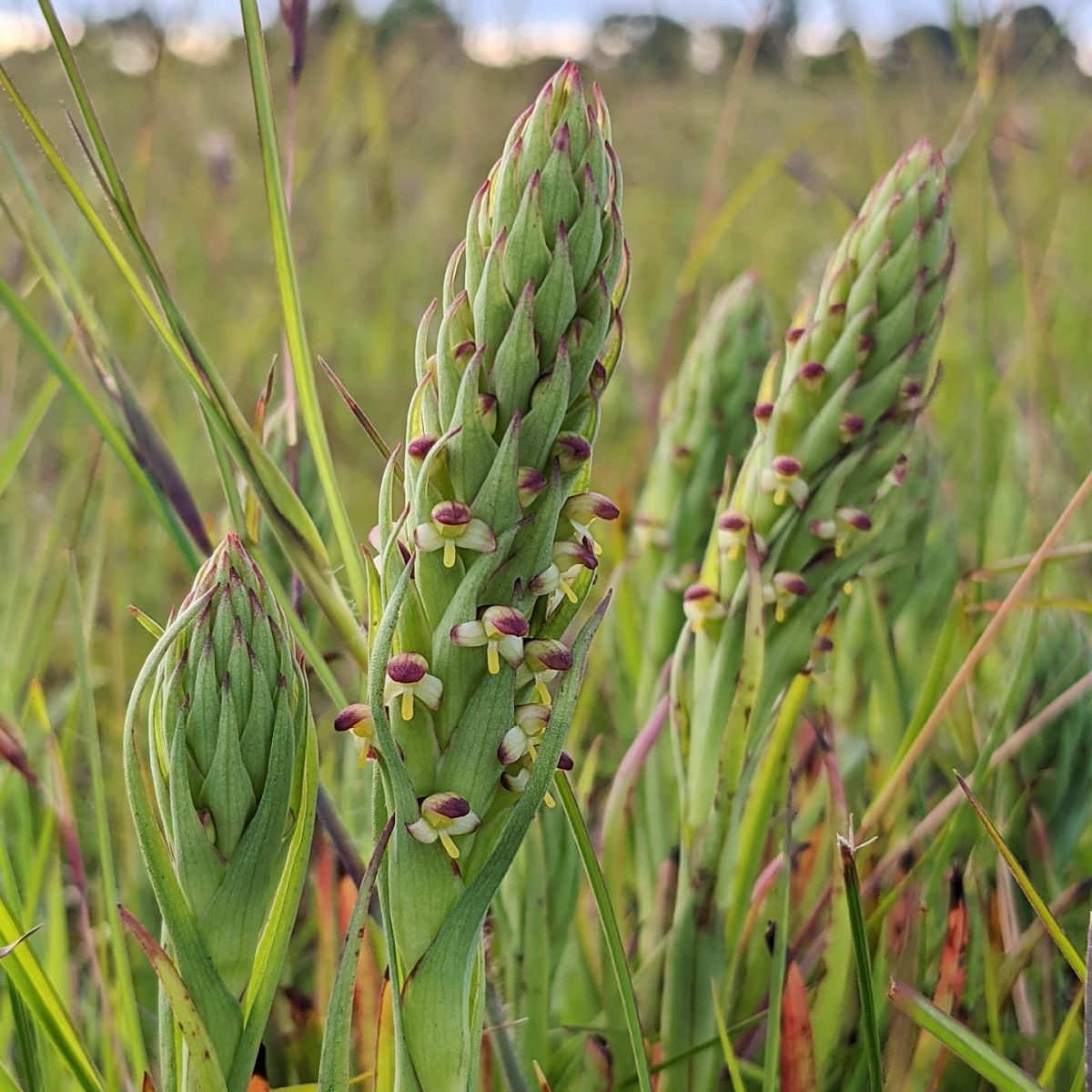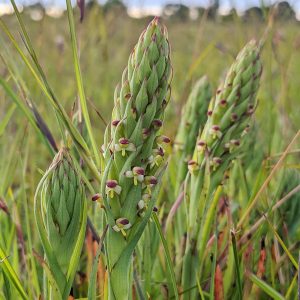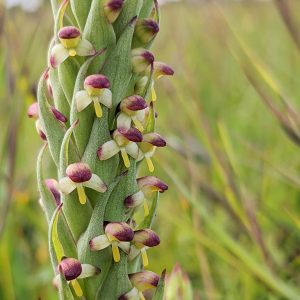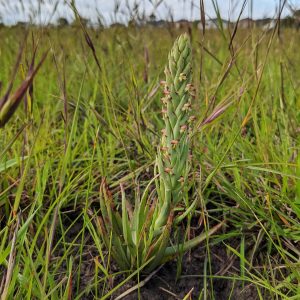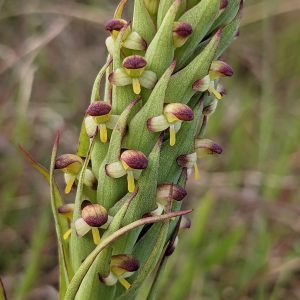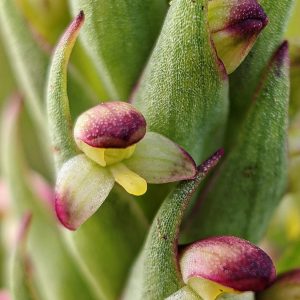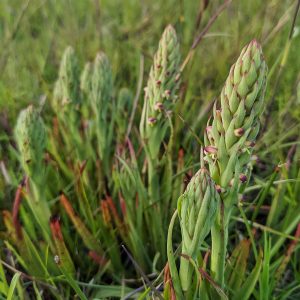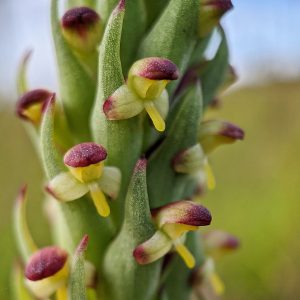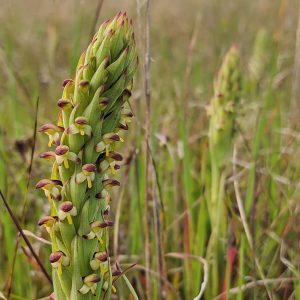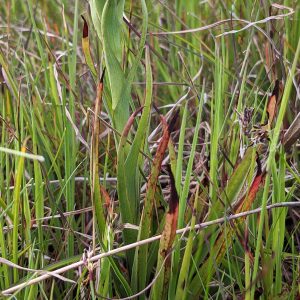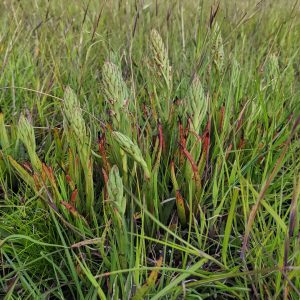South African Weed Orchid (Disa bracteata), not the orchid you want to find on your bush walks but increasingly prevalent across southern Australia.
Endemic to parts of South Africa’s Cape region, Disa bracteata arrived in Australia with several superpowers: it benefits from moderate levels of ground disturbance, it is self-fertile and has apparently generalised to a spectrum of fungal relationships, and each plant produces thousands of grains of wind dispersed seed. Fire adapted, it emerges at least unscathed from management burns, and may benefit by the exercise. Citizen efforts to eradicate the plant from South Australia in the 1990s discovered another brutal fact—unless considerable care is taken, the plant also often returns in greater numbers following efforts to remove its tubers by digging.
Discovered in 1944 on the Youngs railway siding north of Albany WA, the weed orchid was presumably introduced as an accidental contaminant in freight shipped from South Africa. Spread by wind, water-borne erosion and mechanical movements of soil, by the 1980s the WA infestation stretched north to Perth and east as far as Esperance.
Despite its apparent ease of spread, the weed orchid also became a curiosity; its arrival in South Australia has been blamed on collectors, and indeed the first account of the plant germinating as a weed in that state was in a collector’s shadehouse at Blackwood! By 1987 the plant had been discovered in bushland at Belair; an extensive eradication campaign, which became the life’s work of key volunteers and saw ‘tens of thousands of plants’ pulled over the next decade, failed to check the weed orchid’s progress as it spread through eastern SA, Victoria and even to Tasmania.
The species was first detected in Victoria at Bacchus March (1994) and Nillumbik (1995) but can now be found around Melbourne’s outer north and south-east. 1990s collections NW of Ararat and just inside the SA border above the Glenelg were also the beginnings of the orchid’s contemporary prevalence across western Victoria.
View Original Post on Instagram
Search for information about Disa bracteata in the Flora of Victoria
View information and occurrences of Disa bracteata on the Atlas of Living Australia
